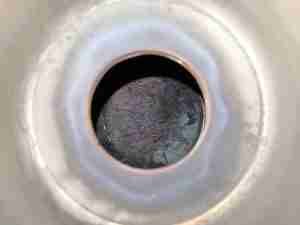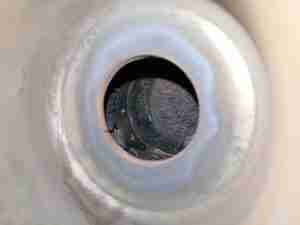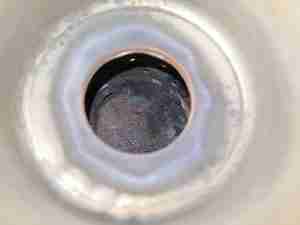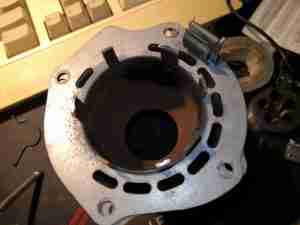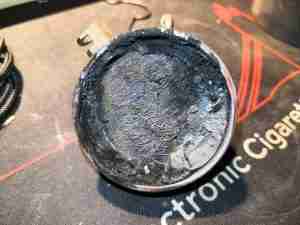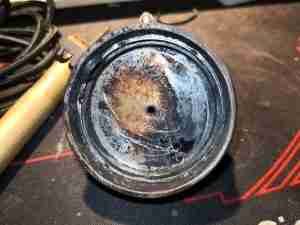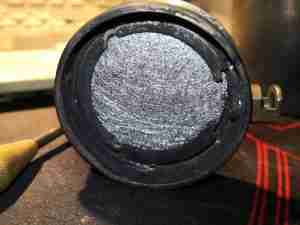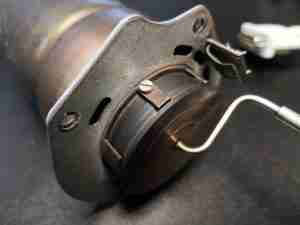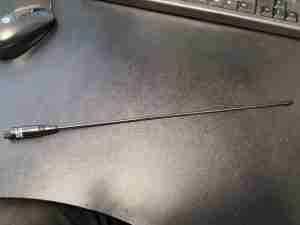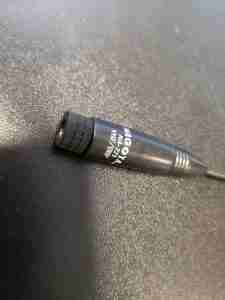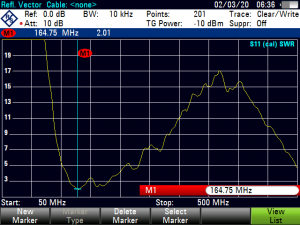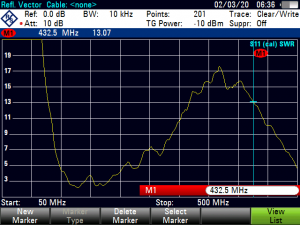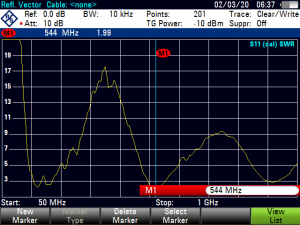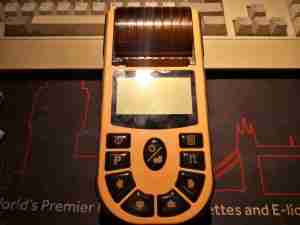
I figured it was about time I added to the medical kit, and since Contec, who makes my SPO² meter seems to have a decent level of manufacturing quality, one of their ECG machines seemed like a good choice. This is the ECG80A handheld Electrocardiograph. This is a single channel, 12 lead unit – meaning it’s a full 12 lead ECG, but it records one lead at a time, in sequence.
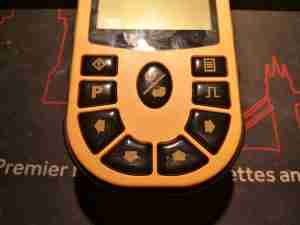
Control is via the front panel, with some large buttons.
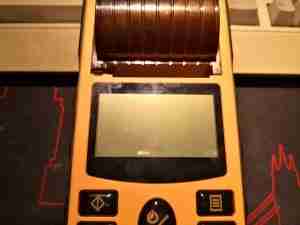
Readout is provided on a dot-matrix LCD, which is brightly backlit. There’s a thermal printer for rhythm strips, printing onto 50mm wide paper rolls.
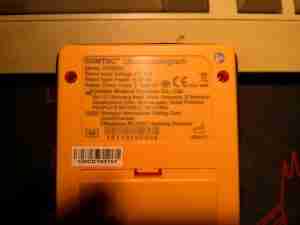
The rear has the laser-marked rating plate, with all the specifications & regulatory markings. From the serial numbering, it looks like my unit was manufactured on 3/11/19, and was the 8th unit off the production line. Underneath can be seen the top of the battery pack, which just clips into place. There aren’t any markings on this at all, but I do know from the manual it’s a 7.4v 2S Li-Ion pack, energy capacity is another unknown, but there is very little weight to the battery, so it can’t be that large.
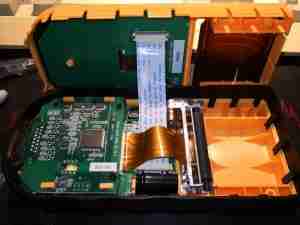
3 Philips screws hold the unit together, and once those are removed, the shell halves separate. The FFC to the LCD & button pad is currently keeping things connected together.
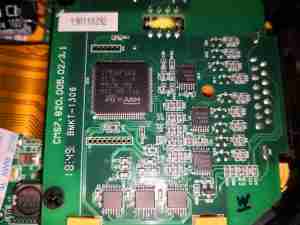
The first of 3 PCBs inside the shell is the acquisition PCB, with all the patient-connected circuitry. The DB-15 connector is on the right hand side, where the ECG leadset connects.

The bottom edge of the PCB has a trio of HJ4051 high speed analog multiplexers, which are switching the ECG leads onto the Ultra-Low Power Op-Amps on the right, a trio of TCL2254A devices from Texas Instruments, before being sent on to the ADC.
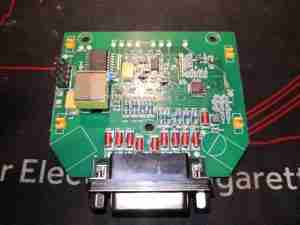
The bottom of the PCB has the DB-25 connector, along with the input protection diodes & resistors. This array of protection components serves two purposes – protection of the instrument against defibrillator voltages & protection of the patient from electrical shock by the instrument.
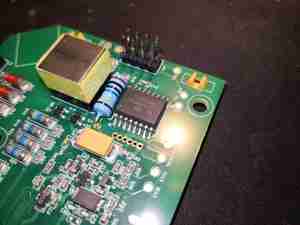
A 5kV isolation barrier is provided between the rest of the unit & the acquisition board, both for the data path & power path. The isolation transformer is visible on the left here, next to the 8-pin header that connects to the main PCB. There’s a 100MΩ resistor across the isolation barrier, probably for ESD bonding. To the right of that is a SiLabs Si8622ED single channel digital isolator IC.
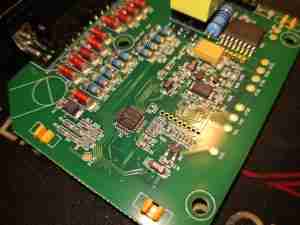
The final bit of conversion of the input waveform is performed by a Texas Instruments ADS1291, a 2-channel 24-bit Analogue front-end specifically designed for Bioelectrical measurement such as ECG. This contains a ΔΣ ADC, and a pair of Programmable Gain Amplifiers on the input, together with some multiplexing. This communicates via SPI to the host microcontroller.
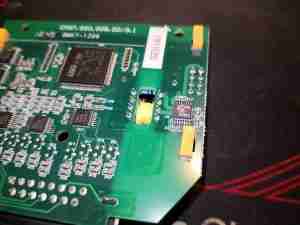
Power is transferred across the isolation gap through the transformer, driven by a Linear Tech LT3439 slew-rate controlled ultra low noise isolated switching supply driver.
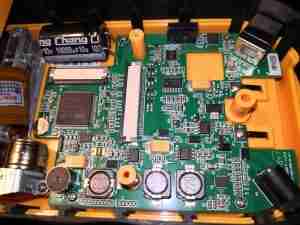
Underneath the acquisition board is the main PCB itself, with the rest of the support electronics. On the lower edge of the board are the power supplies, the main microcontroller on the left, another STM32F103, USB Serial communications top right, and DC input bottom right.
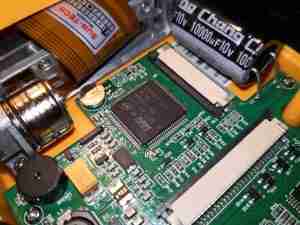
Here’s the main microcontroller with it’s support components. This will be receiving a datastream from the acquisition microcontroller, probably I²C considering the single-channel digital isolation, and further decoding this for either display on the LCD, printing on the thermal paper or sending as a datastream over USB Serial to a PC.
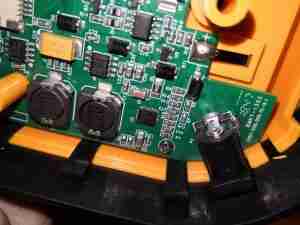
The onboard 2S 7.4v Lithium Ion battery is handled by a Texas Instruments bq24103A Synchronous switched-mode charge management IC here, just to the left of the barrel jack. It’s inductor is just to the left of the IC. This is a fairly nice chip, with support for up to 3 series cells with full auto sensing.
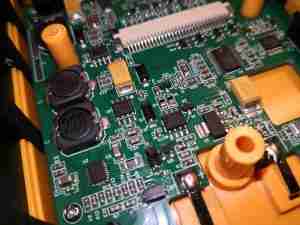
Other power supply rails are dealt with via a pair of TPS5430 buck converters, again from TI. Their associated inductors are along the left side of the board. There’s also an LM1117-3.3 linear regulator for a low-noise supply, possibly for the microcontroller power rail. There’s also a few discrete switching components, and a DRV8834 bipolar stepper driver for the printer.
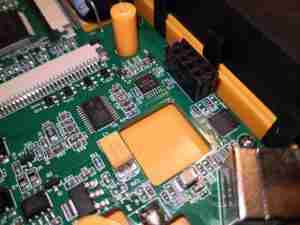
Finally, in the corner of the board is the USB connector, with a SiLabs CP2102 USB UART IC. This interface is used with the optional PC Software. The routed hole in the PCB is clearancing for the isolation transformer of the acquisition board.
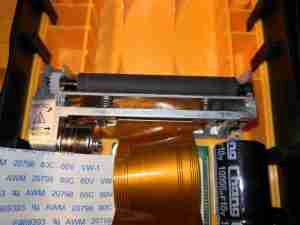
Here’s the printer module, at the top of the shell. There’s a tiny stepper motor on the lower left that moves the paper past the print head, which is the bar mounted on springs across the centre. The odd thing with this is to load the paper, the black rubber pinch roller has to be completely removed from the printer, the paper placed across the print head, and the roller clipped back into place – instead of the roller being mounted on the front cover like on most thermal printers.
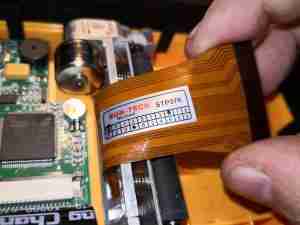
The printer module is manufactured by Sun-Tech, the STP376. I’ve not managed to find any information on this at all, either the manufacturer, or the part number. I did find a SunTech, in the medical sector, but their logo is very different from the labelling here.
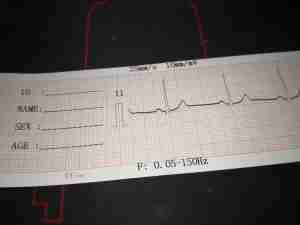
Here’s an example of the print quality of the unit, which just so happens to be lead II taken from me! It’s pretty good overall, with nice clear printing. There is a little interference on the trace that can be seen, but that’s not the ECG’s fault – this trace was obtained in a relatively EMC-noisy environment. The unit first prints a section for patient details, then the lead ident & 1mV calibration mark, then the actual trace. Machine settings are printed in the top & bottom margins, showing the print speed, sensitivity setting, and any applied frequency settings. There is a little bit of interference on the A full 12-lead printout is roughly 3 seconds per lead in sequence, and takes up about 1.2m of paper at standard 25mm/s speed setting.
